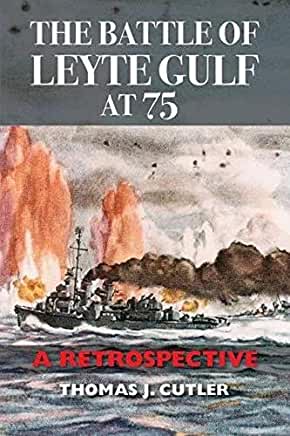Remembering the Battle of Leyte Gulf
Thomas J. Cutler authored a book on the battle of Leyte Gulf several years ago.
Now he has just published a collection of essays, some new and some historical, looking back at the largest naval battle in history, 75 years later.
What makes the battle or more correctly, battles surrounding the return of American forces to the Philippines especially notable, was not just its scale and duration but the fact that the expanded nature of what had become naval warfare by that time was on display.
This is a book for specialists, but a good addition to any library dealing with World War II and the nature of the war in the Pacific.
And from this standpoint, the book is highly recommended.
But I would like to do what specialists by and large shudder when one does this, draw some lessons for the future from the battle(s) itself.
The first thing to take away is to never forget the fog of war.
The best laid plans and thinking going into a conflict can be put aside as the two sides enter conflict and discover that the forces simply do not perform as one would expect.
Notably, the escort force for the amphibious force ended up having to execute fire power missions against a powerful battleship enabled Japanese force and to do so under gunned but with skill and courage the American force survived the Japanese battlespace onslaught which passed through the unguarded San Bernadino Straits.
The second thing to highlight is that the Americans completely misread the Japanese strategy which was to mass force against the American invasion fleet and to, in effect, conduct the Japanese version of the Battle of the Bulge,
In one last attempt to force a decisive battle the Japanese engaged the American force in ways not anticipated by the U.S. military leadership.
Why the US leadership misread the adversary’s plans is part of the constant challenge to not build your combat plans on what you think the adversary as done; you have to understand is situation and how he will calculate his strategy based on his own reading of his strengths and vulnerabilities.
Admiral Halsey went after the carriers, misreading their actual state of readiness, and did not realize that the other elements of the Japanese fleet had become the key to the fleet capabilities and would operate with land based air to execute its attack on the invasion force,
The Japanese carrier force could only provide a diversion given the state of its air combat capability onboard their carriers at the time of the battle.
The third factor is that strategic deception is part of a battle plan.
Here the Japanese used their carriers to draw off Admiral Halsey who took the bit and pulled his forces away from the defense of the San Bernadino Straits.
The fourth factor is training.
This is something Admiral Nimitz had underscored after the Solomon Island challenges but certainly was underscored by the gaps facing the Imperial Japanese Navy by the time of the Battle of Leyte Gulf.
With the significant downturn in readiness in the U.S. force s over the Obama years, and now the returned challenge of continuing resolutions, there was and simply will not be enough money for training in the pipeline for pilots,
And the Japanese defeat against the U.S. and Allied navies is due in no small part to the destruction of the planes and pilots of the Japanese forces and the inability to replace both in a timely manner as the war went on.
The fifth factor is to remind one of the significance of the island chains and their importance for any air naval force which would operate in the Pacific.
With the US and its allies facing a new formidable authoritarian power in the Pacific, the building out of new island capabilities from which to operate should raise significant alarm bells.
A new set of authoritarian powers are building out in the Pacific and working closely together.
The PRC and Putin’s Russia can outpace what the Japanese Navy could put in play in the Pacific over time understood in 21st century combat terms.
And although the century is different, the geography remains the same.
And while the PRC builds out into the Pacific, how will the U.S. and its allies build an effective deterrence in depth capability?
While China builds bases in the South China Sea, why does the Uited States and its allies find it so difficult to reinforce the defense of Taiwan?
And numbers matter.
When one looks at the U.S. fleet which entered the battle of Leyte Gulf, it was large, diversified and could be mixed or matched into a very formidable force facing a diversity of threats.
And today?
And then there is the question of sustainability. At this stage in the war, the U.S. navy had a support fleet without parallel.
And today?
When I visited Bahrain for the first time this year, I saw the first working oil well in the Middle East which was put in play by a New Zealander.
And who was the first client of this oil well?
Imperial Japan.
Authoritarian regimes can play the long game and that is always the challenge to the liberal democracies which can transform themselves in things like Brexit City instead of London England, or impeachment city instead of Washington DC, or what Reagan called the “Bright City on the Hill.”
Just because we won the last battle of Leyte Gulf does not mean we will necessarily win a future one.

